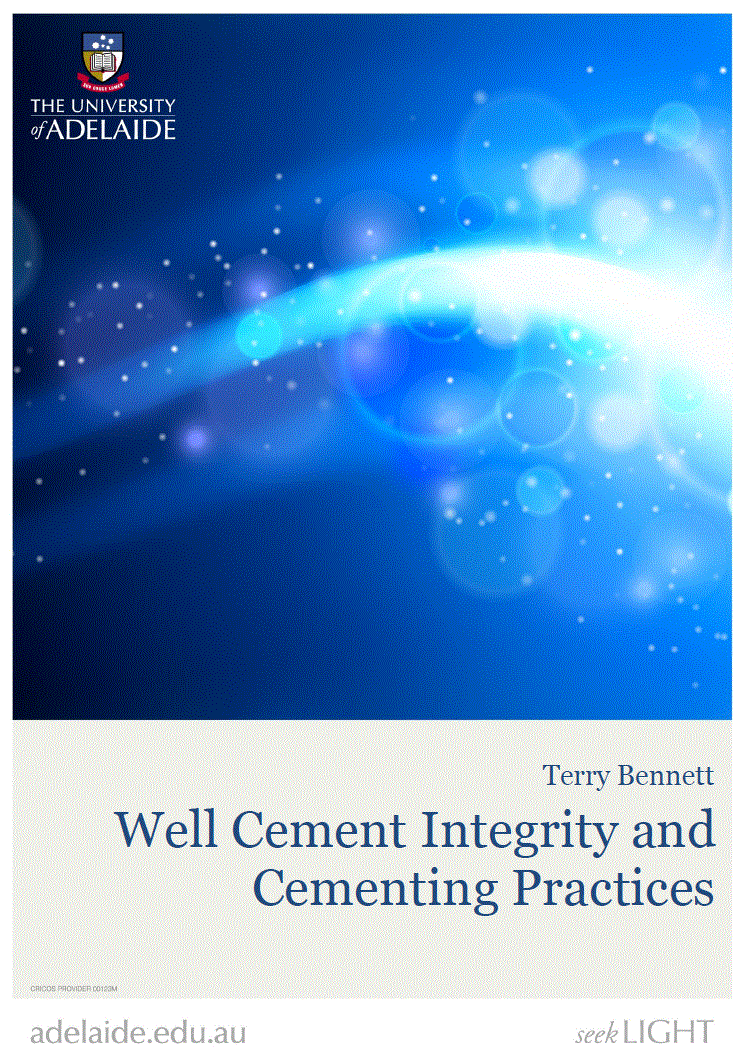Well cement integrity literature review (2016)
The Department for Energy and Mining regulates energy resources industries under the Energy Resources Act 2000 (ER Act) and the Energy Resources Regulations 2013. The regulatory framework is objective based and protects the natural, economic and social aspects of the environment within which activities regulated under the ER Act are carried out. Key to this objective is the requirement for licensees to adopt and demonstrably implement good practices over the life cycle of their activities and projects.
In the context of well operations well cement integrity is a critical component to achieving one of the key regulatory objectives for the protection of groundwater resources.
As part of informing the regulatory process, in 2016 DEM commissioned an independent literature review into the integrity of cement by the University of Adelaide to identify and report on factors that play an important role in the integrity of cement for long term isolation along the entire well life cycle – from engineering design to execution and verification. Information derived from literature together with recommendations are provided in the report.
Download Well Cement Integrity and Cementing Practices report (PDF 7.3 MB)
Key findings
Critical to cement integrity for the purpose of zonal isolation are:
- Appropriate design and verification of the placement of cement; and
- Long term performance of cements.
International studies, hyper-links included below, confirm these findings and conclude that the proper placement of cement is more critical to achieving long term zonal isolation than cement deterioration. Proper placement of cement is achieved by adopting relevant industry standards for cementing design and verification to ensure adverse leakage pathways within the cement sheath and between the cement sheath and casing and/or rock formation are avoided.
Downhole risk practices
This report presents the findings of a study undertaken by a university student employed by PIRSA to investigate the actual and potential downhole risks associated with drilling and well completion practices in the Cooper and Eromanga Basins.



